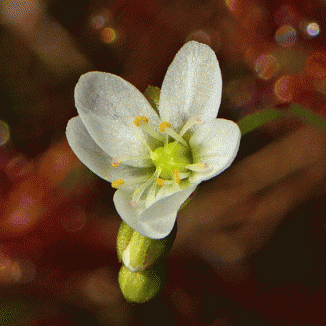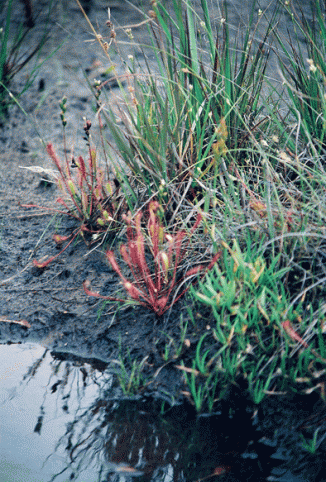One of the plants of wet moorland, moist streambanks and boggy places, the Sundew is an insectivorous plant which derives its nourishment by trapping flies and then digesting them. Oblong-leaved Sundew is less common than Round-leaved Sundew but is similar in having hairs covering its leaves, each hair ending in a sticky blob which glues the insect to the leaf irrevocably. As the name suggests, the shape of the leaf (1cm long) is long, narrow and tapering abruptly to a long stalk. The reddish leaves are in a rosette. The less distinctive part of this plant is its little white flowers (8-10mm across) which are held in a spike on a stem which arises from the axil of one of the lower leaves in the rosette. These flowers have 3-6 flowers in a spike from June to August. The total height of the plant rarely exceeds 15cm. This is a native plant, not as commonly found as Round-leaved Sundew, being more a plant of western bogland and it belongs to the family Droseraceae.
My first record of this plant was in Corraun, Co Mayo in 1990 when I photographed it under very bad conditions. I was so fortunate this year (2014) in that I visited Ballycroy National Park, Co Mayo, where Head Guide, Brid Colhoun, brought me to a superb blanket bog where this species, among others, was growing. It was an amazing place to be. Thanks Brid.
If you are satisfied you have correctly identified this plant, please submit your sighting to the National Biodiversity Data Centre




